In Ghana, kola nut holds a revered place within herbal medicine. Fresh kola nuts are celebrated for their stimulating effects, while dried or burnt forms are used to aid digestion and relieve headaches. Through close-up imagery, Yaw Afrim Gyebi explores the physical characteristics of the kola nut and its medicinal properties, which evolve throughout its life cycle.
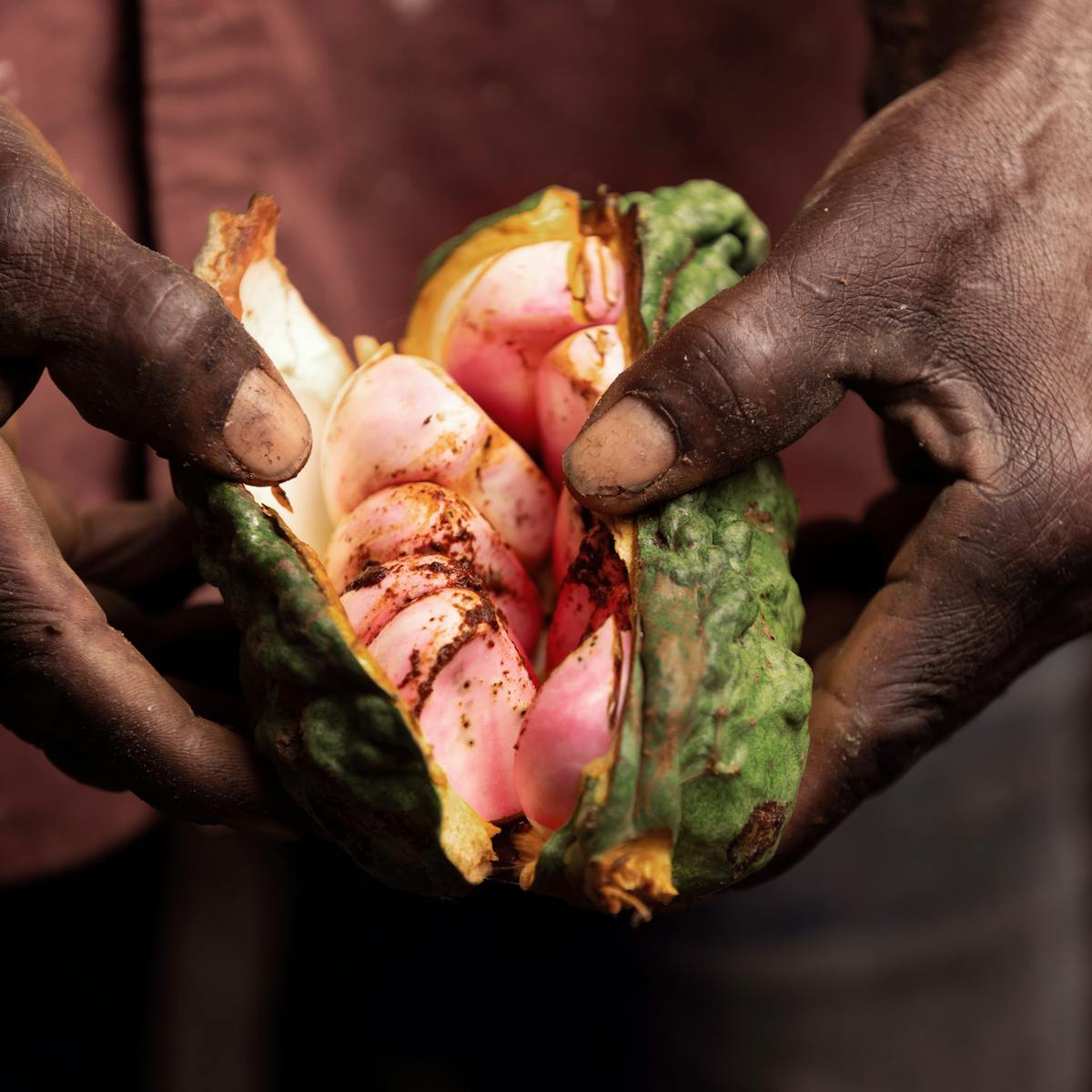
To nurse a kola nut, farmers carefully uncover a seed and partially bury it in soil, leaving a small portion visible above ground. Once the seedling grows to about six or seven inches, it’s ready to be transplanted from the nursery to the field.
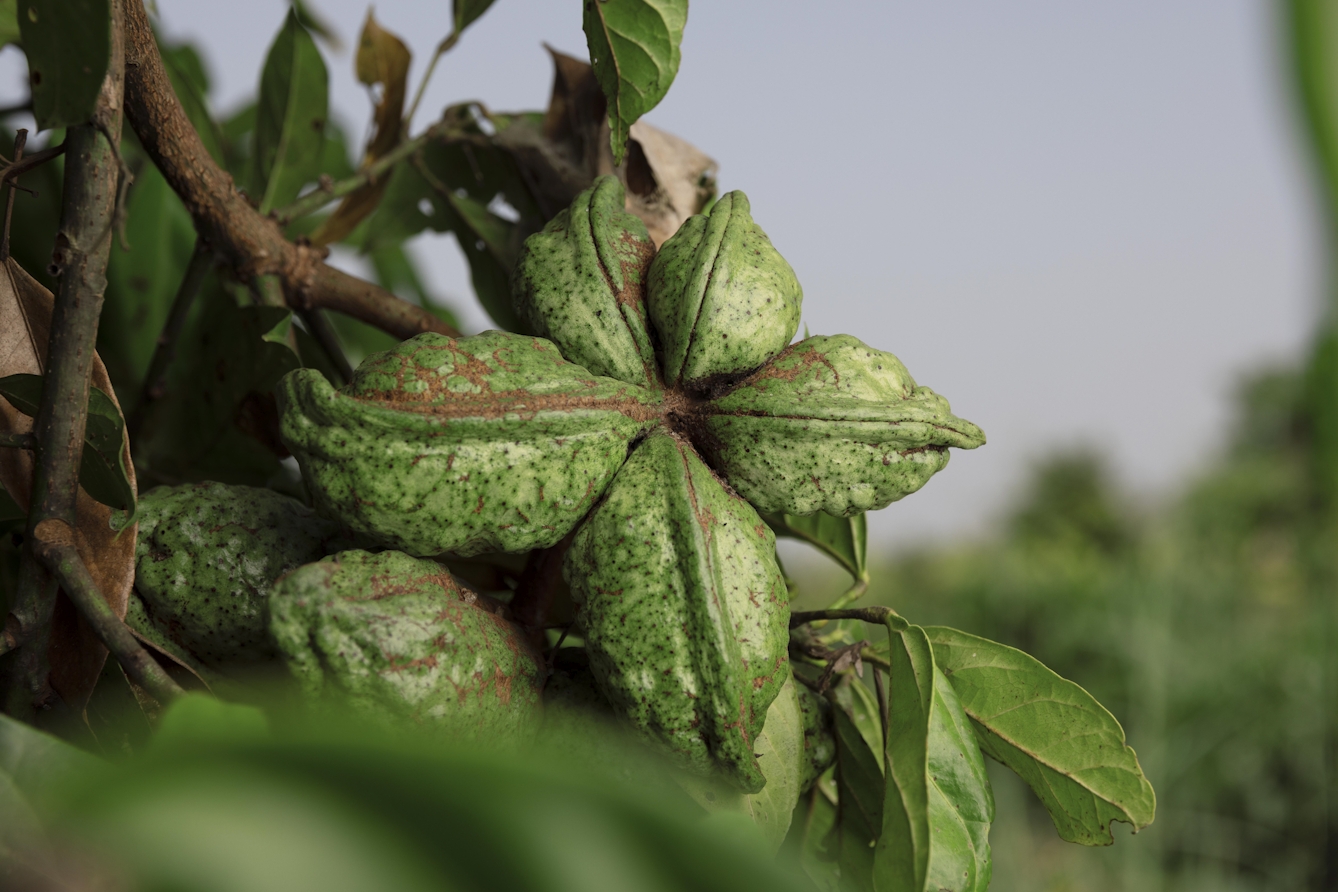
The kola-nut fruit grows on a tree. Its star-shaped pods suggest a promising yield of seeds.
The kola nut plants that yield the best results often produce fruit with a distinctive star-like shape, regarded by some as a natural marvel.
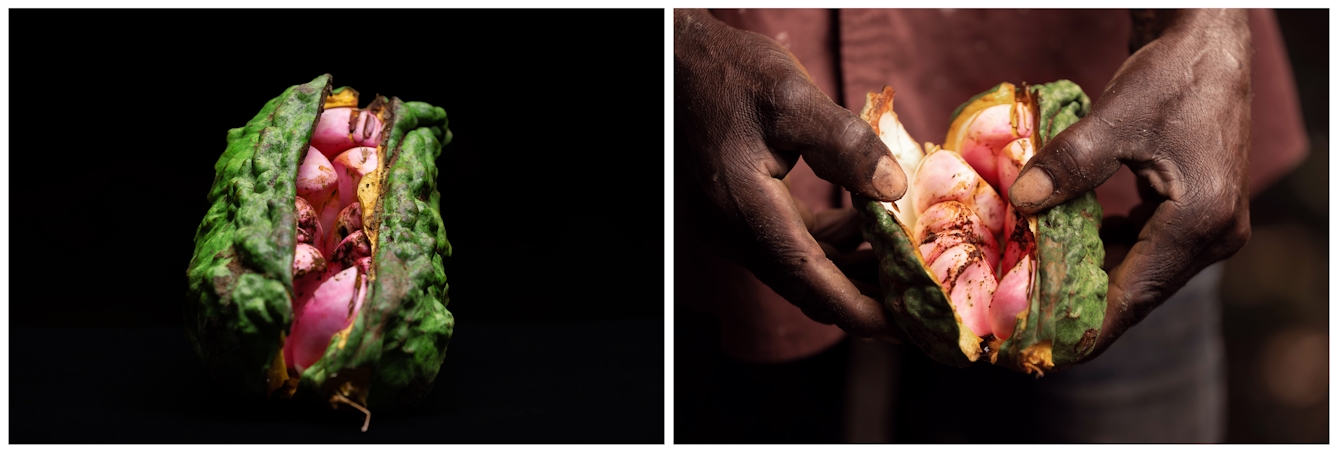
A farmer cuts open a fresh kola-nut pod, straight from harvest to reveal its pink seeds inside.
When these star-like fruits are cut open, they typically contain eight to nine seeds that are beautifully arranged inside.
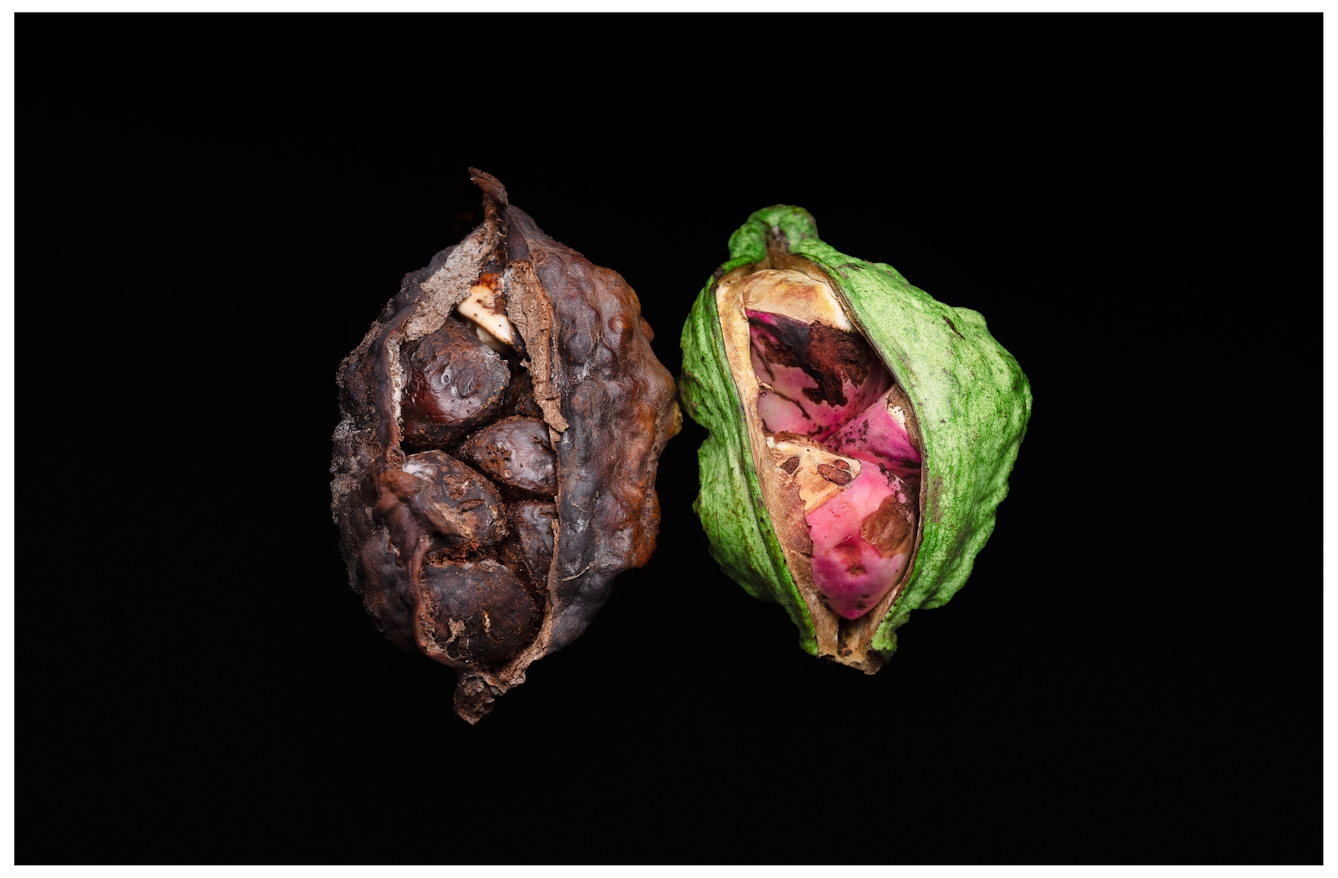
Even if the outer shell has decayed over time, the inner nut remains fresh once the shell is peeled away.
Here is a closer look at the layered composition inside two kola nut shells – one that has decayed after harvesting (on the left) and one that has been freshly harvested (on the right). Kola nut is incredibly durable. Even if the outer shell has decayed over time, the inner nut remains fresh once the shell is peeled away.
Local herbalists and healers value the kola nut for its medicinal properties and use it to address a variety of physical ailments. For instance, when fresh kola nuts are heated and chewed, they offer relief for coughs and other respiratory problems.
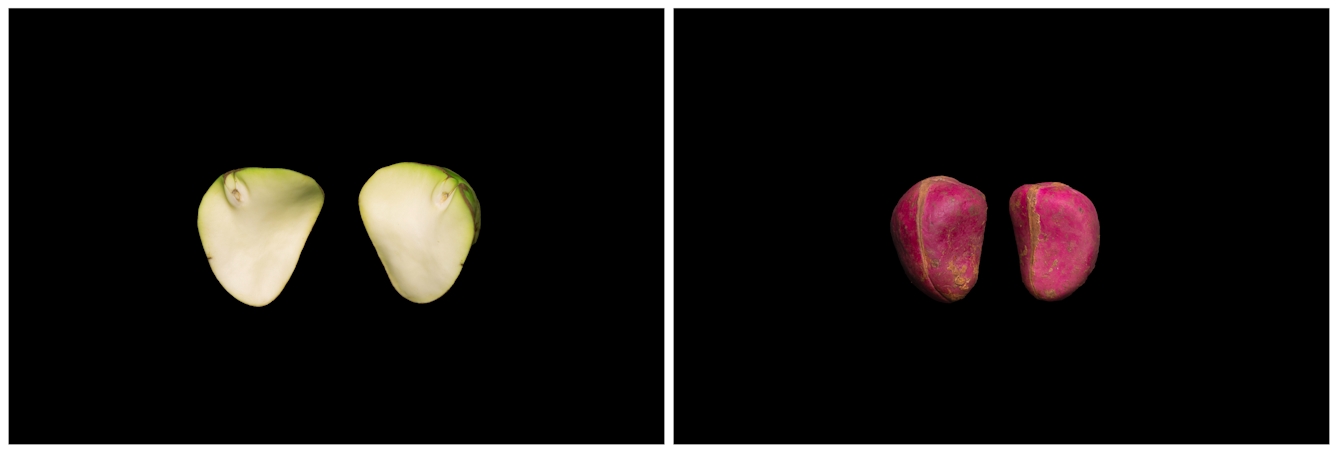
Close-ups of white kola nut and pink kola nuts showcase its vibrant, varied colours.
Some kola nuts are white. Others are bright pink with a smooth texture. Rich colours and polished surfaces are believed to indicate freshness and quality, and that a lot of care was taken when they were cultivated.
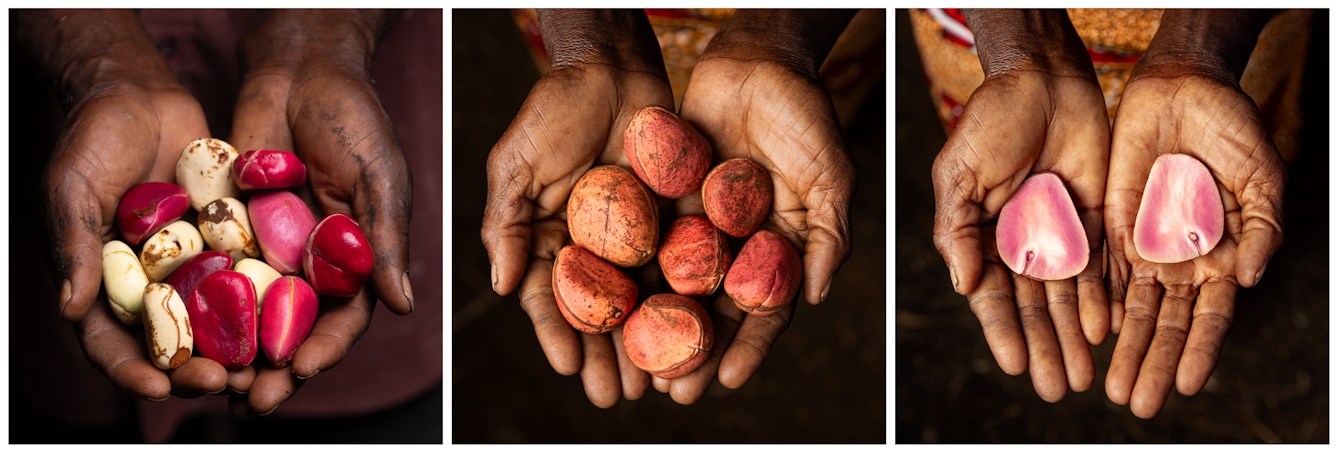
In his hands, a farmer holds a variety of kola nut seeds that have unique healing qualities.
Kola nut is known as a natural energiser and is used to alleviate hunger and fatigue. It offers relief to people engaged in strenuous physical labour, as well as helping with stress and anxiety.
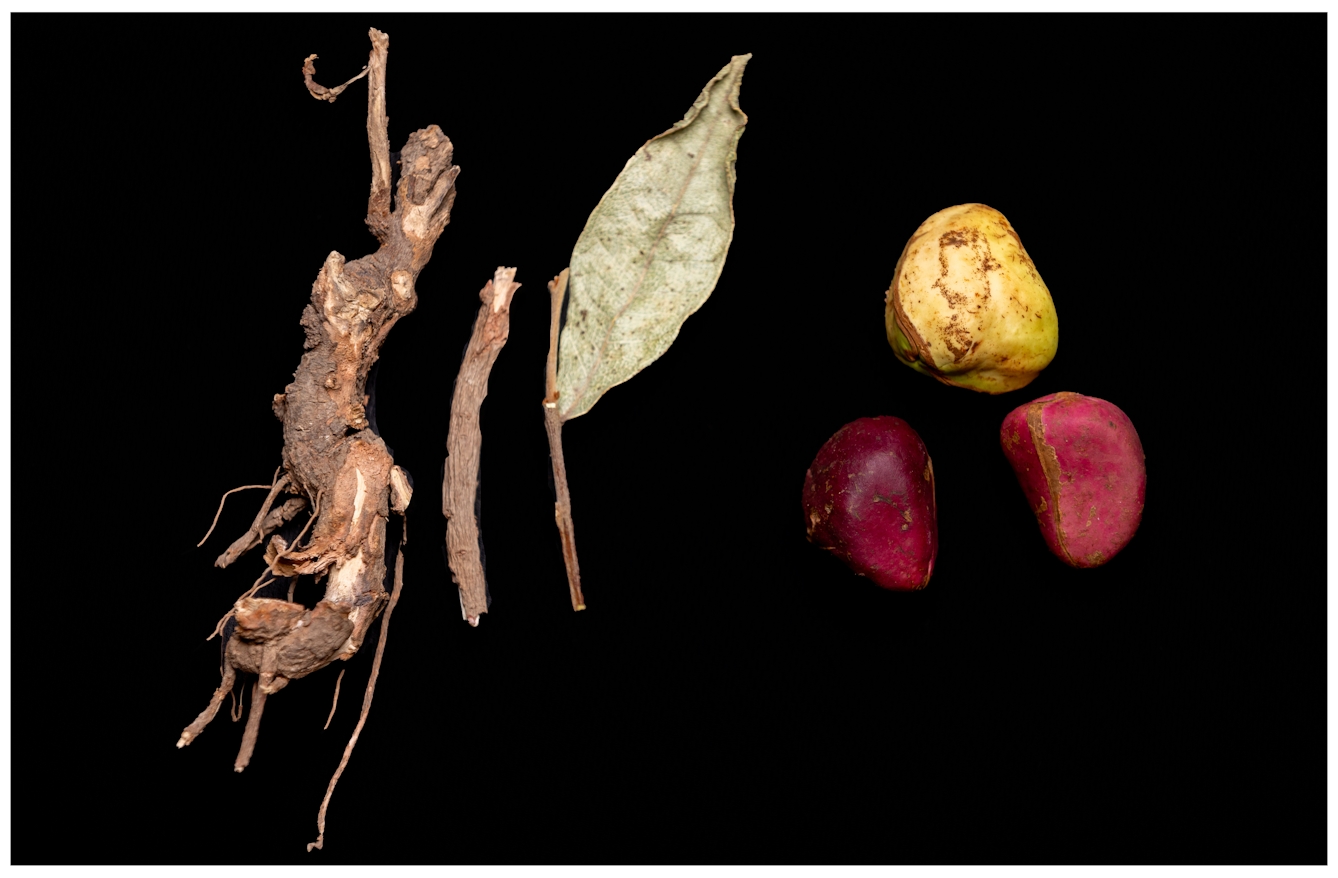
Two varieties of kola nut; shrub kola and its dried leaf, next to red and white kola-nut seeds.
This image shows different varieties of kola nut. The shrub kola, on the left, was once found and used in the northern regions of Ghana. It is a root that shares the same aroma and taste as the kola nut seed. However, the shrub kola is endangered and extinct in some areas. As a result, communities in the north have had to switch to using the kola nut seeds cultivated in the southern part of Ghana, pictured on the right. According to locals, shrub kola offers identical health benefits to the kola nut seed.
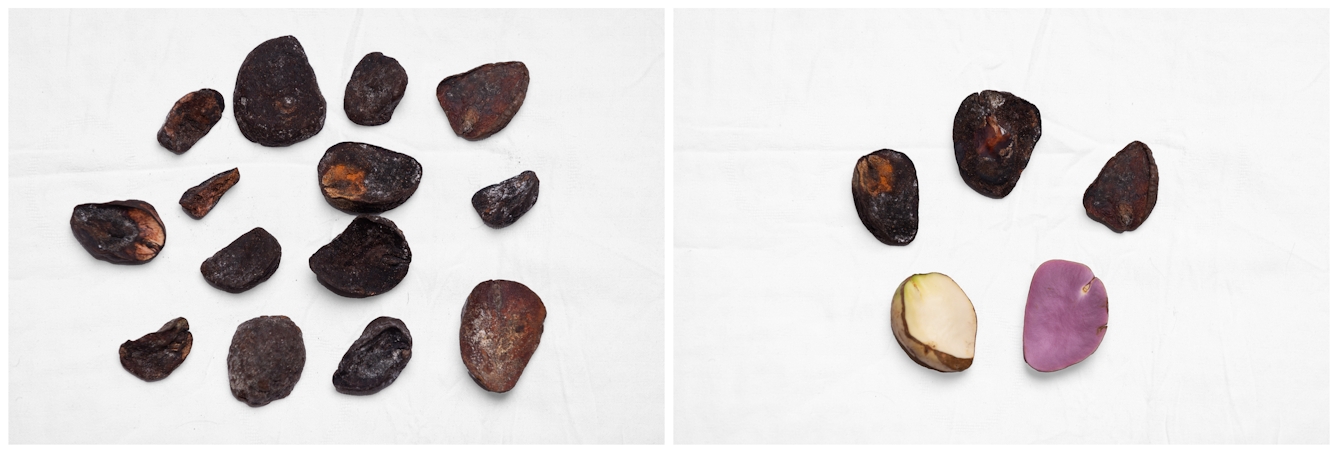
Dried, pink and white kola nuts show the crop in its different forms. Even at the final stage, it is highly valuable.
These arrangements of dried kola nut, pink kola and white kola show the crop in its various forms. They are an essential tool in the local healthcare system in Ghana at each of these stages. For example, dried kola nuts are sometimes ground into a paste to treat boils and other skin infections. And fresh kola nut has antibacterial qualities, so it is used to treat infections such as those caused by dog bites. For this, you have to chew the kola nut and swallow its juice.
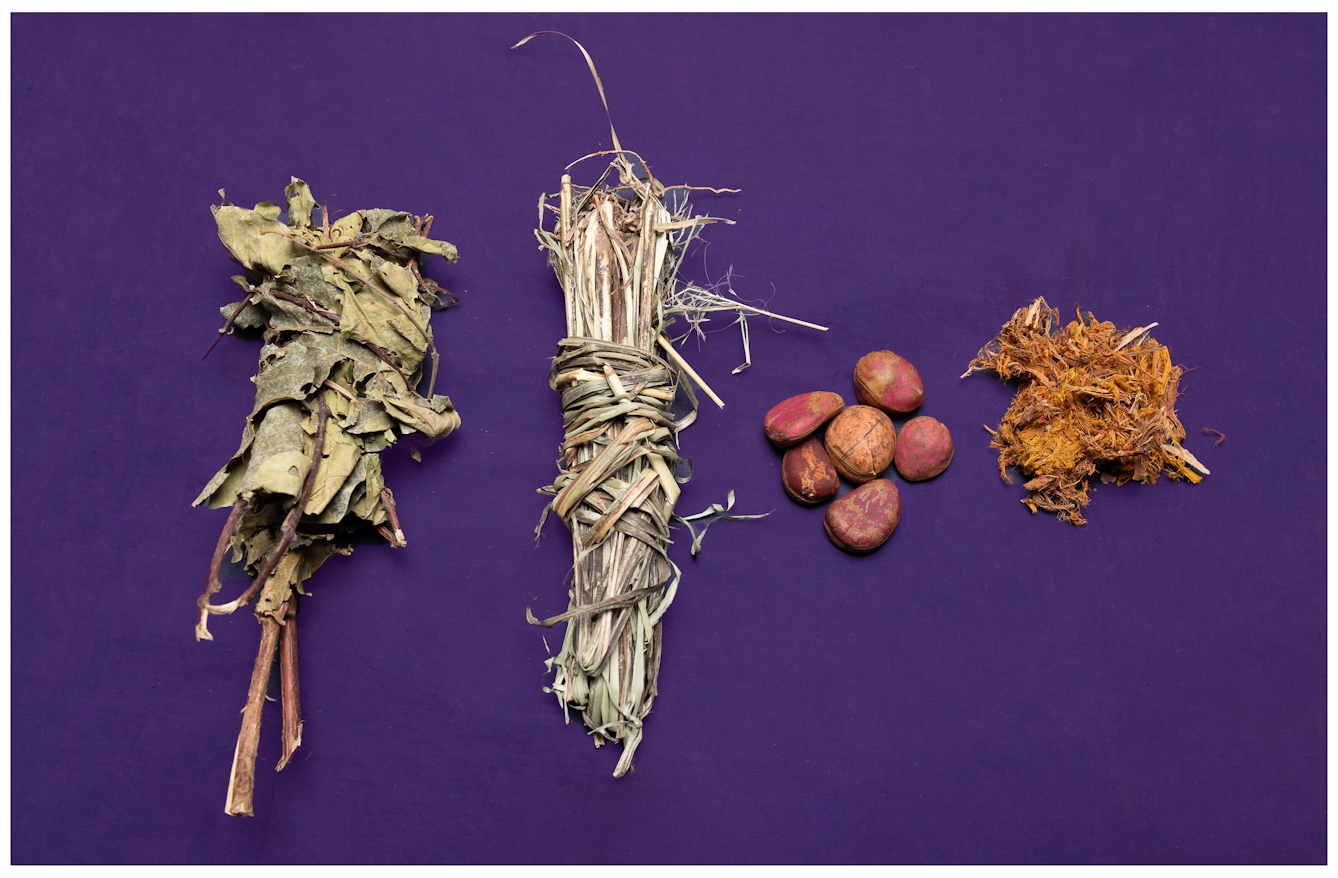
Kola nuts are combined with medicinal herbs and used in traditional remedies.
This image shows a variety of kola nuts alongside medicinal herbs, both of which are traditionally used to treat chronic diseases, stomach aches and other ailments.
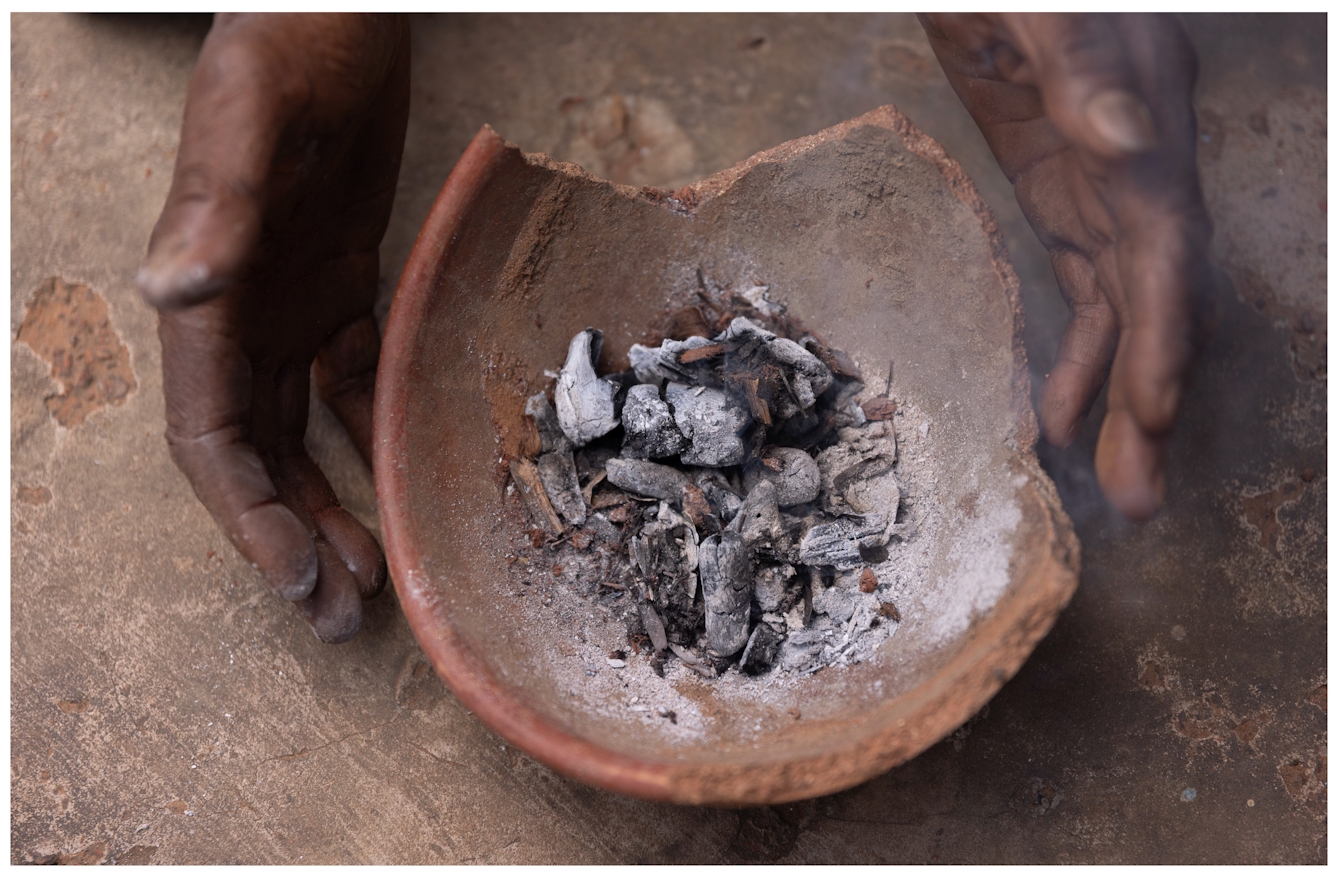
A local herbalist showcases the age-old practice of burning dried kola nuts with medicinal herbs to create healing smoke.
Here, a local herbalist showcases the age-old practice of burning dried kola nuts in combination with other medicinal herbs. This creates a healing smoke that’s used to treat headaches and colds.
The life cycle of the kola nut – from its vibrant fresh state to its potent dried form – underscores its enduring significance in both Ghanaian culture and traditional medicine. It reminds us of the deep connection between nature and healing.
About the authors
Yaw Afrim Gyebi
Yaw Afrim Gyebi, also known as YAG, is a Ghanaian documentary photographer and visual storyteller based in Accra, specialising in humanitarian, environmental and social justice issues. His work focuses on themes of cultural heritage, community resilience, and amplifying the voices of marginalised groups.
Vanesha Kirita Singh
Vanesha is a Digital Editor at Wellcome Collection and is interested in bringing different social, cultural, historical and personal perspectives to conversations about health. She has a career in research, curation and editing. Amongst a wide range of topics, Vanesha writes about Caribbean history, legacies of the Indian indentureship system and resistance to global systems of oppression.

